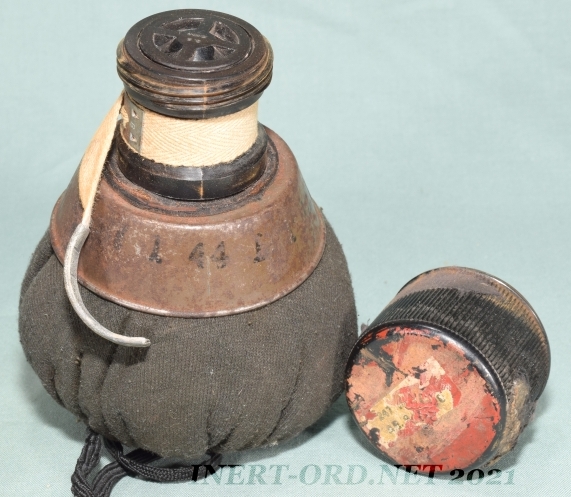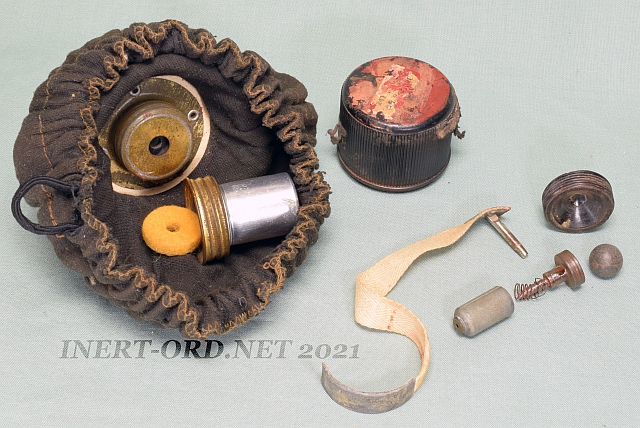
A user-configurable hand grenade, designed with the needs of Airborne Infantry specifically in mind.
Introduced for service in May 1943 and used for the duration of the war. Declared obsolete in 1954.
The fuze and fabric casing were pre-assembled.
Detonator and plastic explosive filler (Composition C-2) were added later, in the field.
The amount of explosive could be varied, to a maximum of 2-1/2 lbs, making for a powerful grenade.
The "Allways" Impact Fuze No. 247 had a modified arming tape, shortened by about half its standard length.(*)
This allowed the grenade to arm in a shorter distance, but also had the adverse effect of making the bomb more hazardous to the user. They had a history of accidental premature and unintentional detonations.
Shortcomings aside, the Gammon Bomb was an integral part of Airborne Infantry equipment for both British and American forces.
(* See clickable photo)

